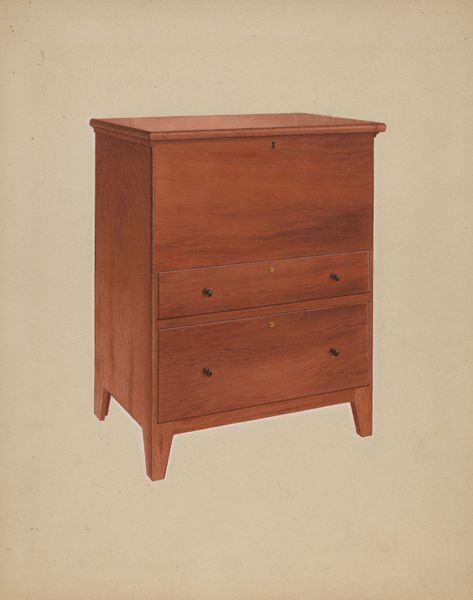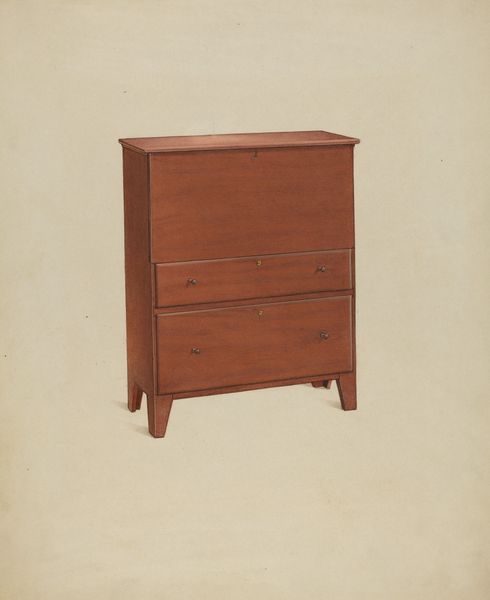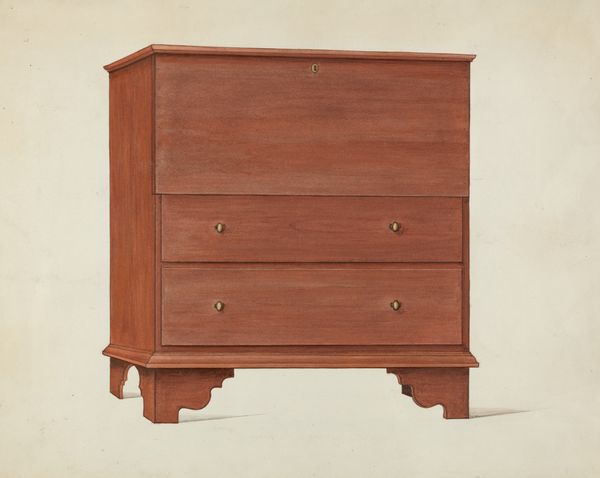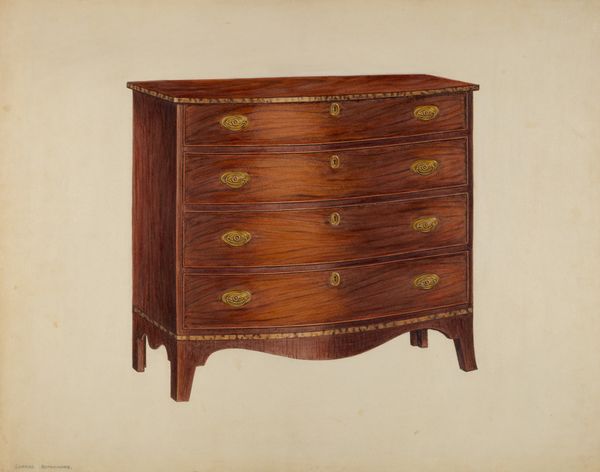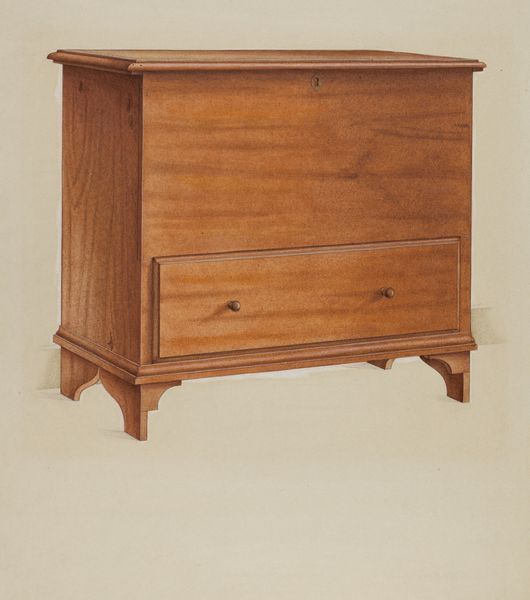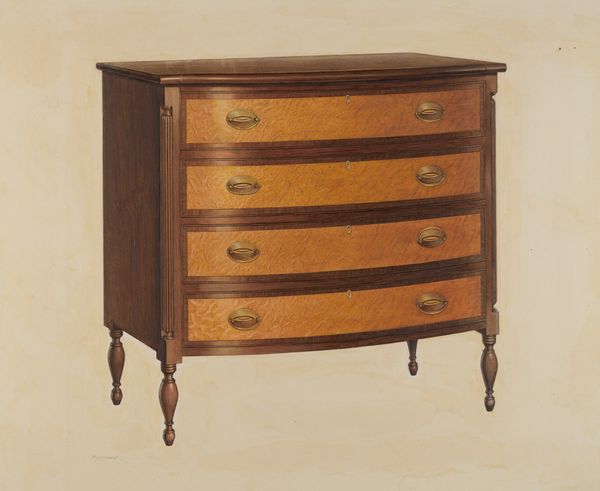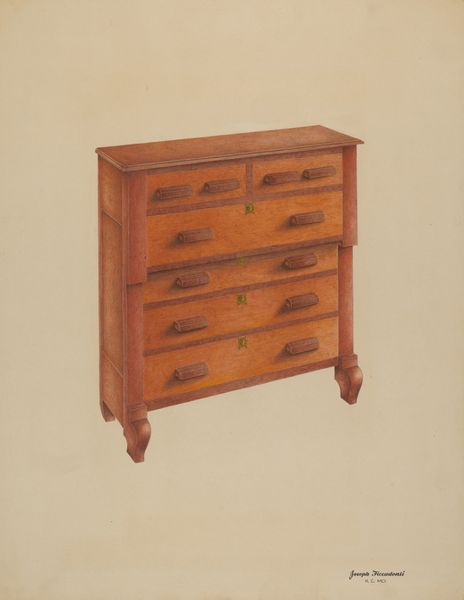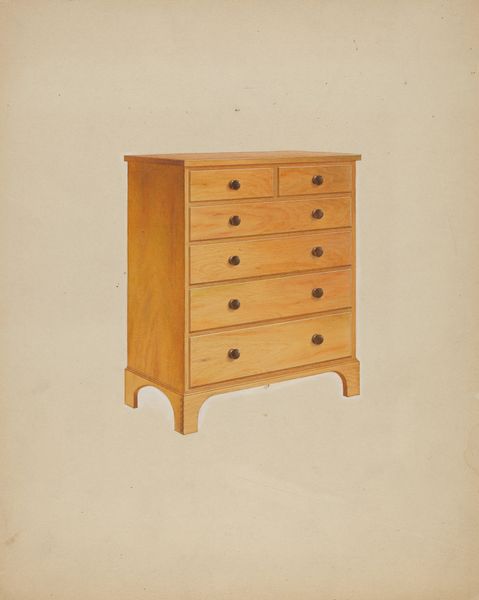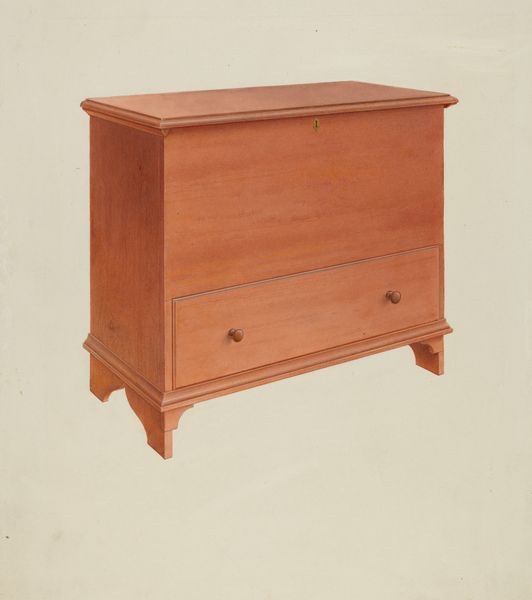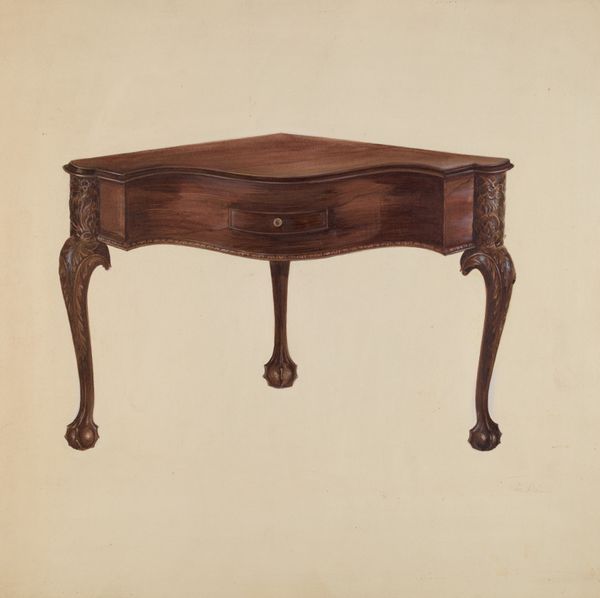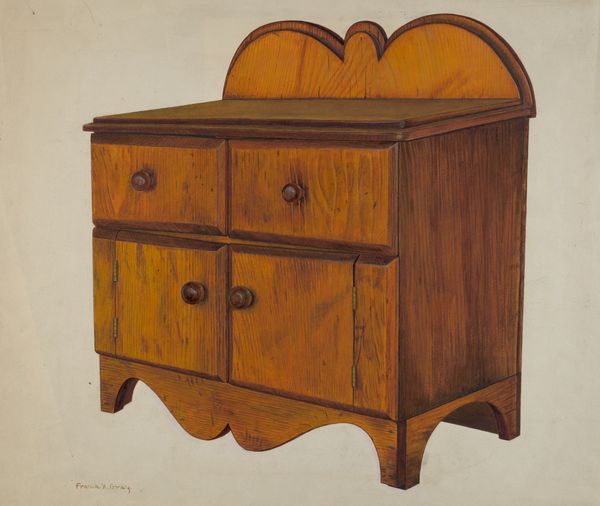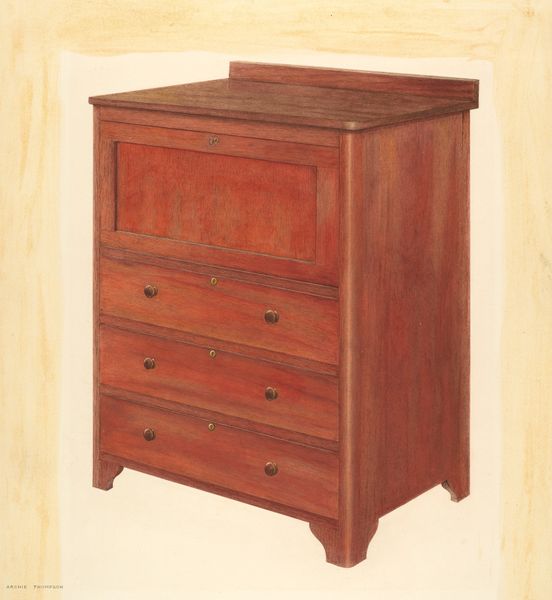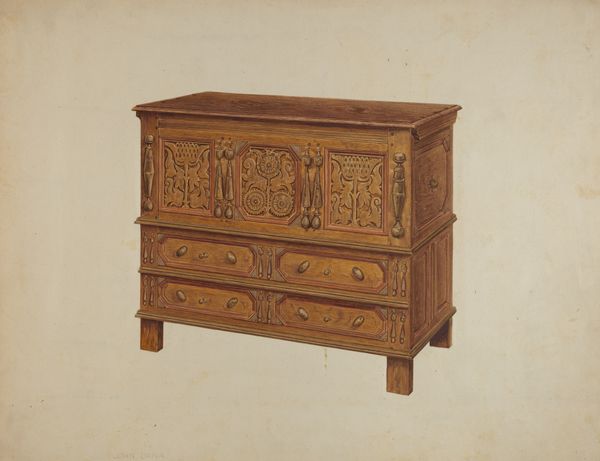
drawing
#
drawing
#
modernism
#
watercolor
Dimensions: overall: 24.2 x 30.2 cm (9 1/2 x 11 7/8 in.) Original IAD Object: 24" high; 22" deep; 46" long
Copyright: National Gallery of Art: CC0 1.0
Editor: We're looking at "Shaker Table", a watercolor drawing made around 1938 by Orville A. Carroll. It feels so...sturdy, doesn't it? The lines are clean, almost geometric. How would you interpret this work? Curator: Let us consider the planes and the relationships between them. The drawers and supporting structures offer a strong sense of horizontal and vertical lines. The wood grain implied by the watercolor's wash creates depth and texture within that otherwise rigid structure, softening its stark geometry. Editor: So it's about the interplay between the rigid form and the texture? Curator: Precisely. And how does the artist lead your eye around the piece? Notice how the eye follows the legs, and the placement of knobs and drawers gives visual weight. Editor: I see it! The color is consistent, too, and it's set off nicely by the light background. The color scheme is very restrained. Is this a quality of Shaker design itself? Curator: The work’s restrained color palette and geometry underscore the form’s utility and timelessness, thus adhering to many principles championed by Shaker design and Modernist principles from this time. Does the color scheme impact how you view it? Editor: Definitely. The consistent color palette enhances the table's simplicity and directness of design. Seeing it this way emphasizes the functional aspect rather than ornamentation. Thanks for explaining that, I never would have picked up on that! Curator: Analyzing how form and function converge, and how they inform the overall aesthetic of an artwork always produces illuminating insights. I hope this close look at Carroll's drawing offers a greater understanding.
Comments
No comments
Be the first to comment and join the conversation on the ultimate creative platform.
